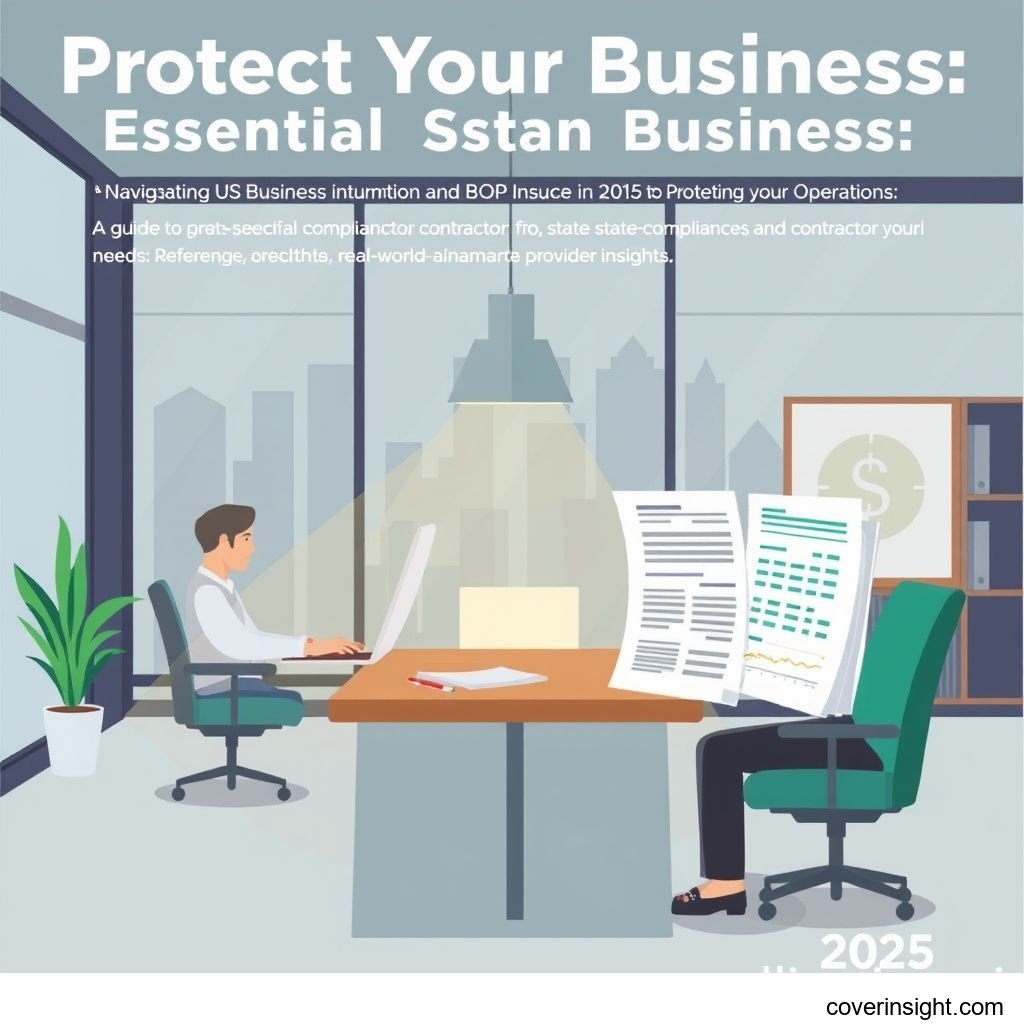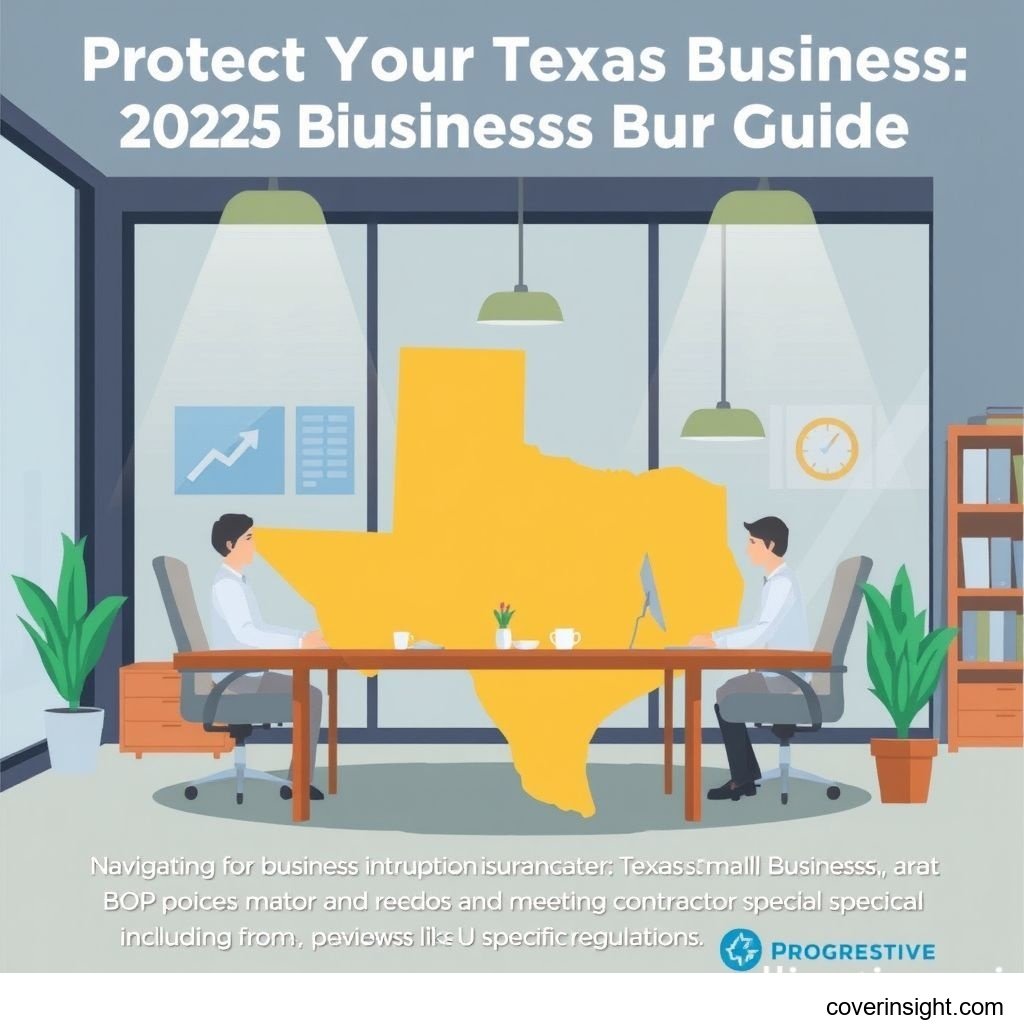Introduction
In the vibrant, ever-evolving landscape of Texas business, preparing for the unexpected isn't just a good idea—it's essential for survival. As we look towards 2025, the conversation around Business Owner's Policy (BOP) and Business Interruption (BI) insurance continues to grow in importance, especially given the state's susceptibility to various natural disasters and unforeseen operational hurdles. For Texas entrepreneurs, understanding these crucial coverages isn't merely about ticking a box; it's about safeguarding years of hard work, investment, and the livelihoods of their employees. Imagine a small barbecue joint in Austin, thriving one day, and facing an unexpected fire the next. Without adequate BI coverage, the aftermath could spell permanent closure, even if property damage is covered. This guide aims to demystify BOP and BI insurance, providing a roadmap for Texas businesses to secure their future. For a broader perspective on protective measures, exploring resources like Insurance Resources Global can also be beneficial.
Coverage Details
What’s Included
A typical Business Owner's Policy (BOP) bundles several key coverages into one convenient package, making it a popular choice for small to medium-sized businesses. At its core, a BOP usually includes:
-
Property Insurance: Protects your building, equipment, inventory, and other business assets from covered perils like fire, windstorms (a common concern in Texas!), and theft.
-
General Liability Insurance: Covers your business against claims of bodily injury or property damage to others that occur on your premises or as a result of your operations.
-
Business Interruption (BI) Insurance: This is often the unsung hero. Also known as Business Income insurance, it helps replace lost income and covers extra expenses incurred when your business must temporarily close or suspend operations due to covered property damage. This means if a sudden pipe burst forces your Houston boutique to close for repairs, BI can help cover your rent, employee salaries, and lost profits until you're back on your feet. It's designed to put you in the same financial position you would have been in had the disaster not occurred.
Common Exclusions
While robust, BOP and BI policies aren't all-encompassing. Understanding common exclusions is crucial to avoid unpleasant surprises. Typically excluded are:
-
Flood Damage: Unless specifically purchased as a separate policy or endorsement, most standard property and BI policies do not cover damage from floods. Given Texas's history with flooding, especially along the coast and major river systems, this is a significant consideration.
-
Earthquake Damage: Similar to floods, earthquake coverage is usually an add-on.
-
Pandemics/Communicable Diseases: The recent past highlighted that most standard BI policies exclude losses stemming from viruses, bacteria, or other disease outbreaks that cause business interruptions without direct physical damage to property.
-
Governmental Action: Closures mandated by governmental authorities without direct physical damage to your property are often excluded.
-
Utility Service Interruption (Off-Premises): If your power goes out due to an issue miles away from your property (e.g., a transformer blows up the street), your BI policy may not cover the resulting income loss unless you have a specific endorsement.
-
Negligence or Lack of Maintenance: Damage resulting from your failure to maintain your property or address known hazards is usually not covered.
Cost Analysis
Price Factors
The cost of BOP and BI insurance in Texas can vary widely, influenced by several factors:
-
Location: Businesses in areas prone to natural disasters (e.g., hurricane-prone coastal regions like Galveston or flood zones) will typically face higher premiums. For instance, the Texas Department of Insurance (TDI) often highlights areas with elevated risk profiles, impacting insurance costs.
-
Industry and Business Type: A small accounting firm will likely pay less than a bustling restaurant or a manufacturing plant, simply due to differing risk exposures. Industries with higher physical risks, like construction or manufacturing, generally incur higher premiums.
-
Business Size and Revenue: Larger businesses with more assets and higher potential income loss will naturally have higher premiums.
-
Coverage Limits and Deductibles: Choosing higher coverage limits means paying more, while opting for a higher deductible (the amount you pay out-of-pocket before insurance kicks in) can lower your premium.
-
Claims History: A history of frequent claims can lead to increased premiums, as insurers view your business as a higher risk.
-
Risk Mitigation Efforts: Businesses that implement robust safety measures, such as fire suppression systems, security cameras, or disaster preparedness plans, may qualify for discounts.
Saving Tips
Navigating insurance costs can feel like threading a needle, but there are smart ways to save without sacrificing essential protection:
-
Bundle Policies: Many insurers offer discounts for bundling your BOP with other policies like workers' compensation or commercial auto insurance.
-
Increase Your Deductible: If you have sufficient cash reserves, opting for a higher deductible can significantly lower your annual premium. Just ensure you can comfortably cover that amount if a claim arises.
-
Implement Risk Management: Proactive measures like installing sprinkler systems, ensuring robust cybersecurity, or having a comprehensive disaster recovery plan can make your business more attractive to insurers and potentially reduce rates.
-
Shop Around: Don't settle for the first quote. Work with an independent insurance agent who can compare rates and coverage options from multiple carriers. This due diligence can really pay off.
-
Regularly Review Your Policy: Your business changes, and so should your insurance. Review your policy annually to ensure your coverage still aligns with your current needs and that you're not paying for unnecessary protections. You can find more general guidance on this via the National Association of Insurance Commissioners.
FAQs
How much does business interruption insurance cost? The cost varies significantly, typically ranging from a few hundred to several thousand dollars annually, depending on your business's revenue, industry, location, and the specific limits and deductibles you choose. It's often included as part of a BOP, so its individual cost is harder to pinpoint, but it generally adds a significant protective layer for a relatively modest increase to your overall premium.
What affects premiums? Key factors include your business's location (especially its exposure to Texas-specific risks like hurricanes or hail), industry, size, revenue, claims history, the chosen coverage limits, and your deductible. The more robust your risk management practices, the better your chances for a favorable premium.
Is it mandatory? No, Business Interruption insurance is not legally mandatory for businesses in Texas, or most of the U.S., unlike certain types of personal coverage like some aspects related to Healthcare.gov or auto insurance. However, if you have a business loan, your lender may require it as a condition of financing to protect their investment. Regardless, it's highly recommended as a critical component of a comprehensive risk management strategy.
How to choose? Start by assessing your business's specific risks and potential financial losses if operations were interrupted. Consider your fixed costs (rent, salaries) and average monthly revenue. Work with a knowledgeable insurance professional who understands the Texas market. They can help you determine appropriate coverage limits and explain endorsements tailored to your business, ensuring you avoid being underinsured. Consulting your State Insurance Departments website can also provide valuable insights into local regulations and consumer guides.
Consequences of no coverage? Without Business Interruption insurance, a covered disaster could be catastrophic. You'd be responsible for covering all ongoing expenses (rent, utilities, payroll) out-of-pocket while your business is non-operational, with no income coming in. This financial strain often leads to permanent closure. For instance, after Hurricane Harvey, many Houston businesses without BI coverage struggled immensely, with some never reopening, despite property damage being covered by other policies.
Author Insight & Experience
Based on my experience working with small businesses across Texas, the value of a well-structured BOP with robust BI coverage cannot be overstated. I've seen firsthand how a seemingly minor incident, like a burst water pipe in a Dallas retail store, can quickly escalate into a several-week closure. Without BI, that business would have faced immense financial pressure to pay rent and employee wages with zero income. As someone living in Texas, I'm keenly aware of our unique challenges, from the unexpected hailstorms that batter properties to the intense heat affecting infrastructure. It’s not just about guarding against the big, dramatic disasters; it's also about the smaller, more frequent disruptions that can still hit your bottom line hard. Investing in the right coverage is a foundational step, giving business owners the peace of mind to focus on what they do best: growing their enterprise. For more detailed information, exploring a resource like US Insurance Home can offer a broader understanding of the domestic insurance landscape.








Comments